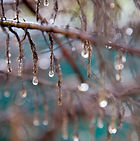
Fraction is
number that shows a part of whole

Fractions are
in Our Daily Life!
Provocation:
Show the students a bar of chocolate and pieces of chocolate. Then find a solution to give 2 students chocolate equally.
-
Brainstorm what fraction is, fractions in daily life such as sharing pizza. Make a common understanding and write on book.
-
Watch movie “Equivalent Fraction 2” and have a discussion about the language or math literacy that will be used, such as I third, 2 fourth ect.
-
Lead them into symbol by discussing.
Fractions is not only for a whole things as 1, but can be a set of things. Things mean amount of numbers. Students need to have the conceptual understanding of fractions a a set of numbers.
1 set of Poky = 20 pieces.
A population of PYP 4A = 21 people
1 pocket of beans = 50 beans
Equivalent fractions are fractions that may look different, but are equal to each other. Two equivalent fractions may have a different numerator and a different denominator. (A fraction is also equivalent to itself. In this case, the numerator and denominator would be the same.)
Students were stimulated to find a problematic situations from pictures as displayed below. The purposes was to build their inquiry in math.

IEQUIVALENT FRACTIONS

COMPARING FRACTIONS
Math
In Where We are in PLace and Time
Related to this unit, students wre learning about fractions and pattern/function.
Having a common understanding about fractions and how it is used in our real life is important, instead of solving lots of problems on sheets. They provoked by watching videos, how to compare things in fractions with same denominator, different denominator but same numberator and with different denominator and numerator.
Students expored more real things from home, and I asked them to do some fractions problem with those stuff they found at home as a home project.
They need to find their own solution, how to compare things in fractions with different denominator. Some of them can come up with ideas, to divide the stuff into similar numbers, hence make the denominaotr the same. Then we try to use that idea, and POP UP!!
Make the denominator the same!
Match one denominator to the others
FInd the same numbers for both denominators



Then, some ideas arose from them that thehave something in common, but questions mark on their head.
HOW COULD IT BE???
So student might start to explore how it could be like this and that.
I provided some learning equipment related with fraction and equivalent.






ADD AND SUBTRACT
FRACTIONS


Match the puzzles as one of
provocations activities.


Students are provoked by using pizza toys. Thet experienced with this toy by touching and questioning to show inquiry happens in the learning.
Then, I just continued the learning from their questions and prior-knowledge.
Why do we need to make the denominator the same?
Students were encouraged to solve the problem, and show them some fact from the pictures I presented in a whole class.


FRACTIONS IN DECIMALS

Students need to know how to make them equal. They finally came up with the idea, that they need to divide the numerator as they divide the denominator by the same number. To simplify it means they could decrease the fractions by doing division, while to make the bigger equalivalent amount, they need to multiply with denominator and numerator by the same number.
Provocations:
Students were given a card to match with other's card. They said the decimals in number form, and looked for others who hold decimal number that had being looked for. This continued until the last card match again with the first card. Some of them can read it very well and can match their cards with other, but somes were not.
From this activity, I had a class discussion about what they already know about those things. This was a good pre-assessment and help me to start the lesson from.



Inquiry in Math:
Students posed a question, and looked for answers by exploring stuffs provided in the classroom.
They inquired on things they explored in the classroom.
Conclusion and Reflection:
In the inquiry leanrning process, students made a Math Journal in small group. They might write any inquiries and learning experiences during the period of studying about Fraction and Decimal.
At the end, they made a conclusion whether they can connect all their learning into our central idea "fractions and decimals can be used to know the population".
SUMMATIVE ASSESSMENT TASK:
Students did the Summative Task, based on the data given, and presented through a diagram.
Success Criterias:
Display a fraction chart of a population
Write a fraction based on the data
Convert fraction into decimals
State a conclusion of the data (comparing)
